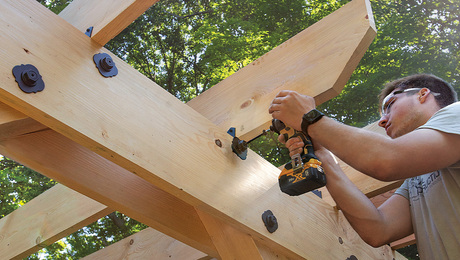I’m trying to get a definative answer on what the frostline is here in southern Wisconsin with regard to required foundation depths. I’ve seen a chart or map before in a book, but I can’t find it or anything online right now. I need to know for my area, but would like to see what the conditions are like elsewhere.
There are a thousand hacking at the branches of evil to one who is striking at the root. — Henry David Thoreau



















Replies
A map might give you actual frost depths (average or worst case) over an area, but don't you need to know what the building department or, if outside a city, the code your building inspector requires? So call them up. Or the nearest city in a similar climate.
But what is good design for a particular house is always site specific. My water line is at 11 feet only because it also has insulation buried over it. Otherwise, I would have put it deeper. My house foundation is only 1 foot deep because it is RFH slab on grade and insulated all around the perimeter.
If you have rigorously removed all frost-suspectible soils, then you won't get frost heaves.
To get frost heaves you need water, frost-suspectible soils (with silt or clay in it), AND freezing temperatures. Eliminating any one eliminate frost heaves.
Putting your foundation deep enough simply avoids the freezing temperatures by getting below the seaonally active zone. But it does it in a pretty dumb way. Obviously the frost depth will be much greater on the shaded, north side of the house than on the south side. Whether you have a heated basement/crawlspace and how much insulation you have outside of the foundation all effect how deep the ground will freeze. And yet we specify a set depth for the whole region without looking at any of these variables.
Ask a couple local foundation contractors and the excavators that dig for them. And be sure to ask how deep the frost goes on those rare cold winters with little snow.
We had a deep cold winter here in the northern Adirondacks, with a ridiculous January that had high temps of about 5 below. But even with that, the heavy cover of snow that preceded the cold snap insulated the ground, and the frost depth was minimal.
Under the roads, though, with constant plowing, the frost was down a good four feet.
"Under the roads, though, with constant plowing, the frost was down a good four feet."
Sounds like November, not the winter! A cold winter with some snow cover will occasionally freeze water mains at 14 feet up here. Without snow cover - deeper, of course. Gotta go deeper under plowed roads.David Thomas Overlooking Cook Inlet in Kenai, Alaska
Wow. I do water main, we are 5' here in Indianapolis. I can't imagine laying water main at 14'.
I went down to Miami a few years ago and stopped by my supplier's branch in that area, saw all the fittings they use. The water's only 2' deep and cut into heavy coral kind of stuff. Their sewers all run shallow because of the soil conditions and every subdivision seems to have a small lift station to minimize fall.
But heck if you guys are starting at 14' for water (assume sewer's that deep?) there's probably not a single lift station in Alaska...
remodeler
Not many lift stations in Alaska, a few, but not like Florida.
But some areas of SE AK have towns that stretch for miles in a narrow strip between the cliff and the ocean. They have lots of lift stations (or lots of septic).David Thomas Overlooking Cook Inlet in Kenai, Alaska
I agree with what David Thomas said--you want to do whatever the building inspector wants--he's the guy that counts!